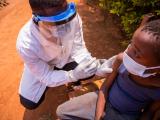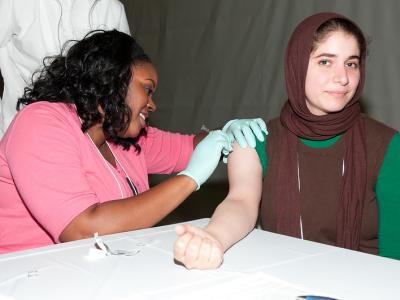Oct 1, 2010
Revelation of unethical STD research in 1940s prompts US apology
In response to historical research exposing unethical medical experiments by the US government in the 1940s, Health and Human Services (HHS) Secretary Kathleen Sebelius and Secretary of State Hilary Clinton issued a joint apology today to the people of Guatemala. Susan Reverby of Wellesley College uncovered information about a 1946 experiment by the US Public Health Service to determine if penicillin was useful in treating sexually transmitted diseases (STDs), according to an HHS fact sheet. Experiments involved infecting commercial sex workers with STDs and allowing them to have unprotected sex with soldiers or prison inmates. "When few of these men became infected, the research approach changed to direct inoculation of soldiers, prisoners, and mental health patients," the HHS statement said. Some of those who were infected received only partial or no treatment. Reverby's report is slated for publication in the Journal of Policy History. In a news release today, Sebelius and Clinton said the experiments were clearly unethical and that they were outraged to learn that the trials were conducted in the name of public health. "The conduct exhibited during the study does not represent the values of the United States, or our commitment to human dignity and great respect for the people of Guatemala," Sebelius and Clinton wrote. "The study is a sad reminder that adequate human subject safeguards did not exist a half-century ago." HHS said the government will ask the Institute of Medicine to review the experiments and issue a full report.
Oct 1 HHS press release
Access to HHS fact sheet and related materials
Rival teams claim discovery of bunyavirus in China
A dispute has erupted between American and Chinese scientists over who discovered a new bunyavirus that has sickened hundreds of people in central China and killed scores in recent years, according to a report published today in Science. The illness involves high fever, gastrointestinal distress, and in many cases profuse bleeding, and in 2007 Chinese government scientists concluded it was human granulocytic anaplasmosis (HGA), a bacterial infection. But subsequent cases didn't respond to antibiotic treatment. In 2009, Xue-jie Yu, a tick-borne disease expert at the University of Texas Medical Branch in Galveston, studied the disease under a visiting researcher program. Last December Yu's team identified the cause of the disease as a new bunyavirus, a family that includes hantavirus and Rift Valley fever virus; they have submitted a report on their findings to the New England Journal of Medicine. But this past summer, a team led by Li Dexin, a virologist at the Chinese Center for Disease Control and Prevention, also found a bunyavirus, possibly the same one discovered by Yu. They have submitted a more detailed analysis of the pathogen to The Lancet. Yu has accused Li's group of trying to rob him of the discovery, but Li says Yu's viral sequence is incomplete and that his own team identified the virus as the cause of the disease. The Lancet on Sep 17 asked Li's group to withdraw their paper and resubmit it after settling the dispute. So far, scientists have not determined how lethal the virus is or how it spreads.
Oct 1 Science story summary

















